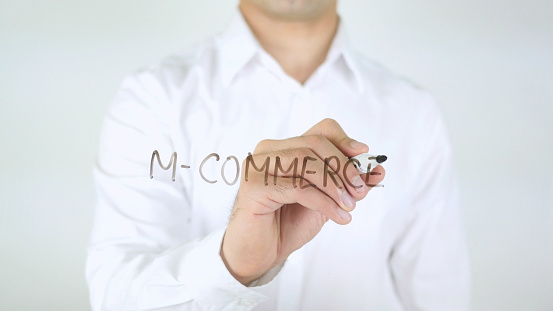Arunabh Madhur, Regional VP & Head Business EMEA at SHAREit Group
Last year, we saw explosive growth in Black Friday sales; a culmination of Covid-19 lockdown restrictions easing, shifting traditional shopping behaviour, and accelerated digital transformation. Notably, we witnessed the mobile economy gain momentum, with consumers enjoying the ease and convenience of a streamlined purchase process at the touch of their fingertips. At SHAREit, we have also noticed that peer-to-peer sharing has become increasingly popular and a habit. The unprecedented ability and speed allowing app sharing between family and friends have only brought people closer together. Whether it’s a product recommendation or sharing discount codes with loved ones, digital interactions are built on offline relationships. In fact, ‘social commerce’ is highly dependent on trust within a community, the interactions of users, and word of mouth.

The global pandemic has spearheaded the adoption of mobile technology around the world, including in emerging markets. In turn, in-app purchases spiked worldwide in this time, especially in emerging markets like Southeast Asia, the Sub Indian continent, the Middle East and Sub-Saharan Africa, as consumers spent more of their income online. According to recent data, there are now 13 markets where users are spending more than four hours per day using apps. To name but a few, these include Indonesia, Singapore, Brazil, Australia, Japan and South Korea. This was anticipated, due to social distancing measures and lockdowns globally, most people turned to digital channels to find products and services.
How mobile is redefining shopping experiences
Mobile shopping has already become a huge part of our lifestyle. According to eMarketer, mobile commerce remains the most preferred channel among consumers globally. By 2024, global mobile commerce retail sales are expected to reach nearly $4.5 trillion, accounting for 69.9% of total retail e-commerce sales.
The pandemic saw a large set of people moving to mobile transactions largely in the space of e-commerce, medicine buying and food delivery business. These were supported by a very strong mobile commerce and payments which lead digital payments push and the entire conversation around the mobile commerce category.
The value of consumer personalization: how payments can help
It’s also important to not forget the rise of e-payments that has been pushing digital shopping towards wider adoption. Digital payment methods, such as Apple Pay and Google Pay, which enable card payments via smartphones, have not only streamlined the customer journey but also facilitated access to e-commerce, especially to the large unbanked population in emerging markets. With digital wallets becoming a core part of payments and online shopping experiences, mcommerce transactions will continue to grow.
In addition, the rise of micropayments has built a strong mandate in driving mcommerce internationally and in emerging markets, with digital payments expected to account for 91% of total e-commerce spending by 2025. This is an up-tick from 80% in 2020. Therefore, the key for retailers is to support as many digital payment mechanisms as possible to help meet consumer demands and minimise the rate of transaction abandonment. Merchants and payment providers also need to work together on optimizing websites and payment solutions for smartphones in order to remain competitive and appealing to consumers.
New digital habits and why there is no going back
It is easy to see that digital habits learned during the pandemic have now been fully integrated into people’s daily routine. Improvements in productivity and efficiency brought about by increased adoption of mobile services is benefitting both consumers and brands. As a result of this, mobile is now at the heart of business strategies for consumer brands, which helps when reaching audiences at scale, improve customer shopping experiences while boosting online conversions. This is also a preferred route for people worldwide right now as it provides a convenient channel to shop whenever and wherever. Therefore, we expect that the majority of Black Friday and Cyber Monday purchases will come from online and mobile purchases. For companies, that want to grow over the next few years, investing in mcommerce transactions and creating bespoke experiences for their customers will be pivotal.
Further to these fast-growing mcommerce across emerging economies, mcommerce is also experiencing growth across Europe. In the UK specifically, 60% of total retail online sales now come from mobile phones – that’s more than any other county in Europe. In fact, only the US and China are ahead when it comes to the mcommerce market. Mobile phones are now the primary choice when it comes to making online purchases and it is expected to surpass £100 billion by 2024 in the UK. As a result of the rise of mcommerce, SHAREit now works with leading global e-commerce brands, in Southeast Asia, South Africa in Europe and Middle East with a performance ad solution and the retargeting solutions.
The evolved mobile shopper has new expectations and seeks richer experiences from existing brands. For companies with their eyes firmly set on growth in the coming year, brands need to adapt to this change, and create bespoke experiences for their customers in order to thrive.







